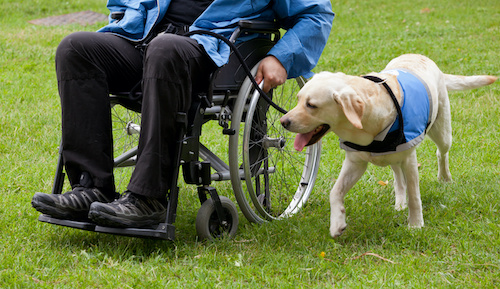Assistance dogs are amazing companions and guide their owners to help them stay out of harm’s way. These dogs are specially trained to help people with disabilities or conditions that require assistance. They are especially important for seniors striving for independent living, as their dog is always by their side. If you’ve ever seen an assistance dog helping an elderly or disabled person before and wanted to learn more about them, here are a few facts to know.
Assistance Dogs Are Trained For Different Reasons
Specific training is required for assistance dogs depending on the needs of humans. They can help people who have conditions like neurological disorders, visual impairments, hearing impairments, chronic illness, physical disabilities, PTSD, diabetes and much more. Assistance dogs are important for senior care since they can protect their elderly owner from hazards and know what to do in the event of an emergency. Plus, they offer great companionship and are often brought to psychiatric and medical facilities to give patients a psychological boost as they are going through difficult times.
What Is The Training Process For Assistance Dogs?
As you may imagine, the training process for assistance dogs begins the day they are born and is fairly intensive for several months. When the puppy is born, it is trained in controlling stress and handling the environment around them. After a few weeks, the puppy will be moved to a foster family for anywhere between 1-2 years and will be guided by a specialized trainer. At this point, the puppy will learn obedience, get potty trained and understand basic commands before undergoing intensive specialized training at the training facility.
The training facility is where the dogs start getting trained for specific disabilities and conditions. They will slowly be introduced to their long-term owner as they learn about avoiding obstacles, how to guide their owner, public access training, intelligent disobedience and more. This training process takes roughly one year before they graduate and are given to their full-time owner.
How Assistance Dogs Make A Difference
If you’ve ever seen an assistance dog in action, it’s impressive to watch how they interact with their owner and the steps they take to keep them safe. Whether it’s navigating them up a wheelchair ramp or across a busy intersection, the assistance dog knows exactly what to do to keep their owner safe. Assistance dogs are allowed to go anywhere with their owner, provided they have a qualifying disability, and are a big component of senior independent living.
Next Day Access firmly believes assistance dogs are essential to senior care for people with certain disabilities or impairments. Equipping your home with a wheelchair ramp or other mobility devices can prevent significant injuries, and having an assistance dog to help you just adds to your safety precautions. Having a companion with you that looks out for your health and safety is great to have. We are always available to answer any questions you may have or to assist in any way, so Nous contacter today.





